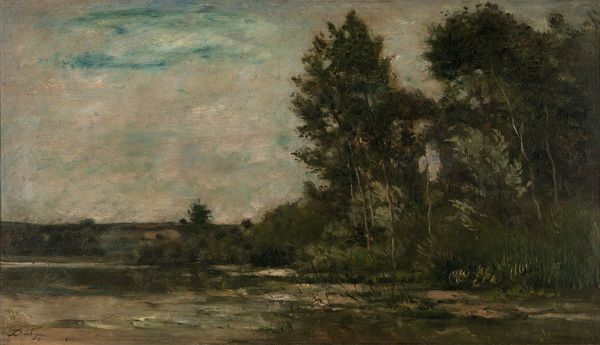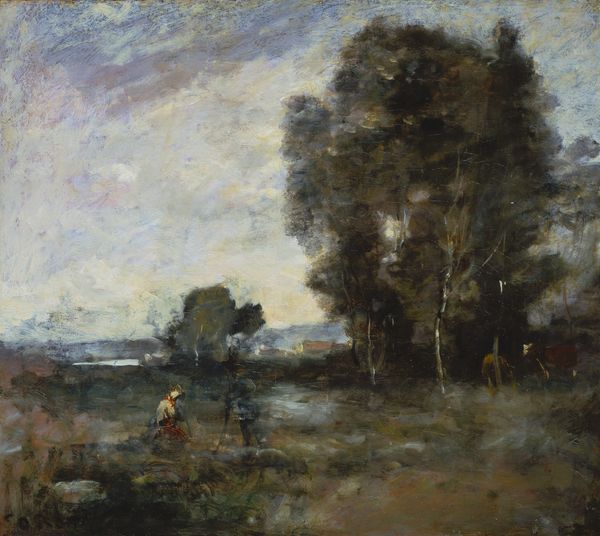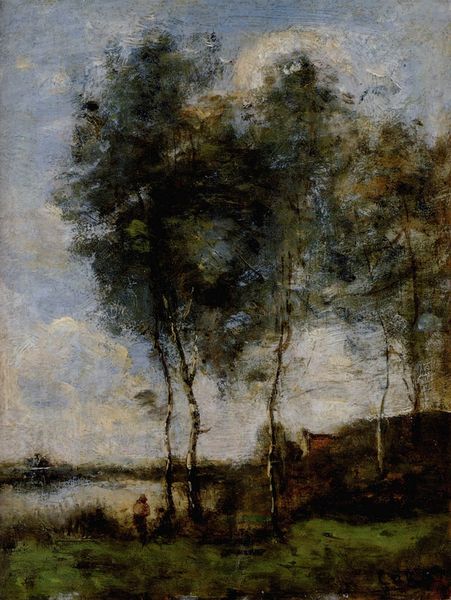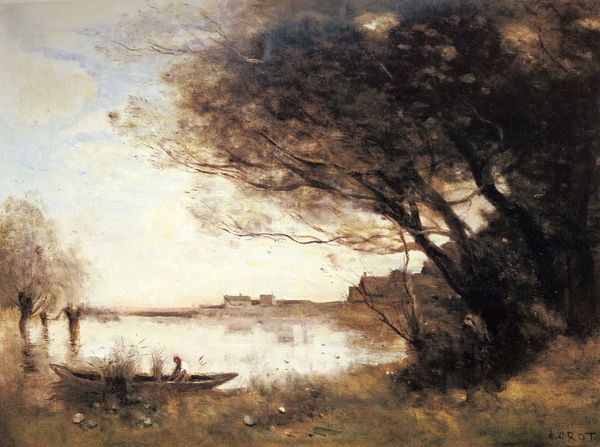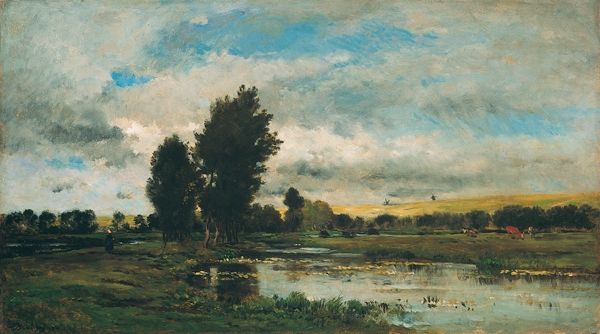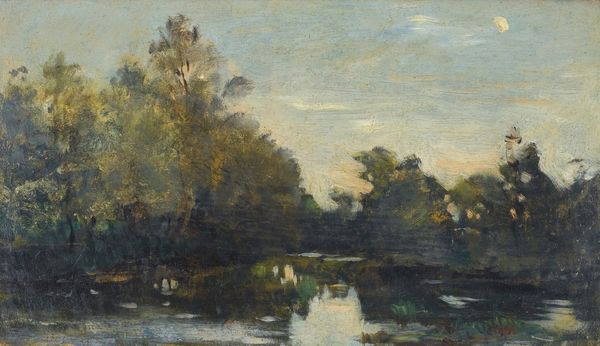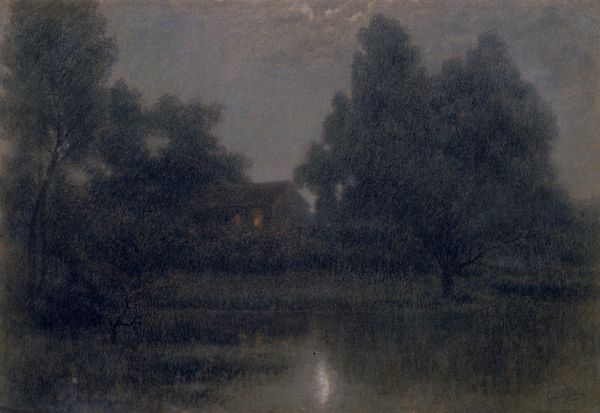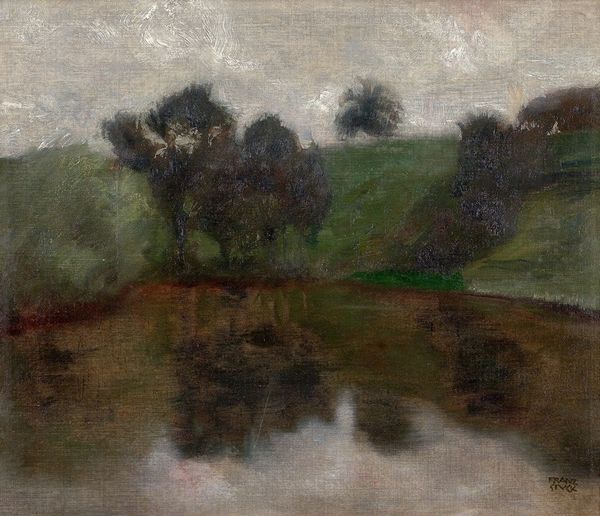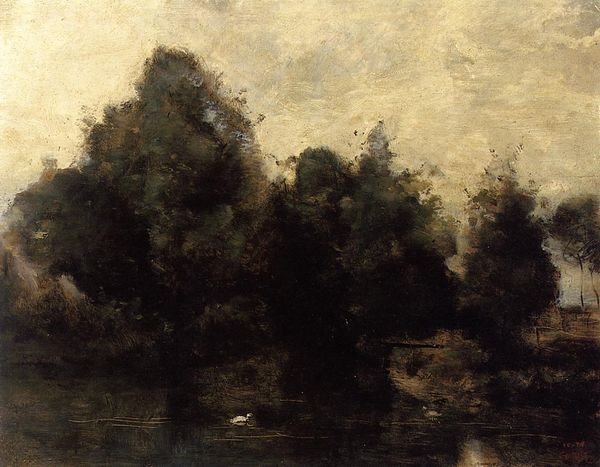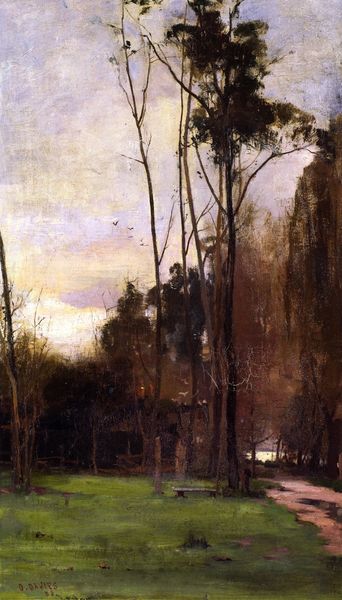
Dimensions: 22.9 x 31.8 cm
Copyright: Public domain
Curator: Welcome. We're looking at "Edge of a Lake (Souvenir of Italy)", a painting made around 1860 by Camille Corot. Editor: It’s moody. The subdued tones—almost a monochrome palette—evoke a stillness. There's an undeniable tranquility, isn’t there? Curator: Precisely. Corot masterfully balances Romantic ideals with emerging plein-air techniques. Note the subtle variations of light. This wasn't purely observed. Corot returned to his studio to refine it, building upon on-site sketches. It’s less a mirror, more a distillation of lived experience through artistic memory. Editor: That's key. He uses the material of oil paint to evoke atmospheric conditions, but the structural elements – the dark vertical of the trees contrasted against the shimmering horizontal lake – speak to a conscious design. The formal qualities point toward a more composed, intentional artwork, contrary to spontaneous Impressionistic ideas. Curator: Absolutely. One shouldn't disregard Corot's social milieu. France underwent massive industrialisation and urbanization during his lifetime, creating nostalgia for pastoral scenes. Corot responded to and shaped these sentimental desires, in what some called modern Barbizon landscape. He even instructed younger impressionists like Pissarro and Monet. His painting captures and mythologises the changing landscape. Editor: But is the idyllic scenery just a romantic escape, or perhaps a contemplation of changing socio-political realities? His landscapes have this calming effect through color relations and tonal modelling—a formal concern about creating harmony on the canvas. Curator: One reinforces the other. I see them working hand in glove. Editor: Agreed. It creates more than meets the eye in one static surface. Well, it makes you ponder, doesn't it? Curator: Indeed, and in understanding the history and observing the technical aspects, we gain deeper understanding of Corot’s legacy.
Comments
No comments
Be the first to comment and join the conversation on the ultimate creative platform.

